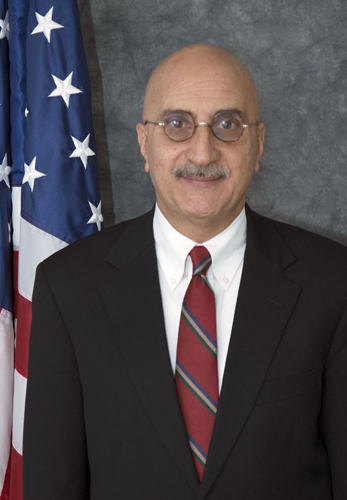Blog posts from AHRQ leaders
OCT
31
2017
Joining the Battle Against Opioid Addiction in Rural Communities
 AHRQ’s development and dissemination of health care data already position the Agency as an important partner in the battle against opioid addiction. Our ongoing data analyses support the efforts of policymakers, researchers, and clinicians who seek reliable information as they consider strategies to tackle the crisis.
AHRQ’s development and dissemination of health care data already position the Agency as an important partner in the battle against opioid addiction. Our ongoing data analyses support the efforts of policymakers, researchers, and clinicians who seek reliable information as they consider strategies to tackle the crisis.But while this work continues, I’m pleased to report that another element of AHRQ’s work related to opioids is taking shape—expanding access to safe, high-quality treatment for opioid addiction. Four AHRQ grantees are working to increase delivery of medication-assisted treatment (MAT) in rural areas of Colorado, North Carolina, Oklahoma, and Pennsylvania. And this fall, AHRQ awarded a new grant to researchers in New Mexico to test combining evidence-based strategies to support primary care practices in delivering MAT.
For example, in Oklahoma, AHRQ’s grantee, the American Institutes of Research, is making it easier for busy rural primary care physicians to obtain needed certification to allow them to prescribe medications as part of treatment for patients addicted to prescription opioids and heroin.
This will be incredibly beneficial to Oklahoma towns like Muskogee, a small community in the eastern portion of the State that currently has no primary care physician providing MAT. Opioid-related deaths in Muskogee have reached double digits per 100,000 people per year over the past few years.
Meanwhile, the University of Colorado-Denver is partnering with rural communities to co-create messages and materials that are locally relevant and that deepen community awareness of opioid use disorder and knowledge of MAT. By engaging community members, the team hopes to reduce one of the chief barriers to treatment—stigma. Reaching communities like Bent, Colorado, where opioid-related deaths have doubled since 2002, can provide needed lifelines to care.
By lowering barriers and empowering rural primary care teams, these grants will provide access to care for 20,000 people struggling with opioid addiction. They will also create a blueprint for how other States can harness the power of primary care to expand access to evidence-based treatment for opioid use disorders.
While these grants show early promise for delivering help, AHRQ is already making tools and resources available to help primary care practices rise to the challenge. This month, AHRQ published a collection of over 250 tools and resources to assist health care professionals, patients, and communities implement MAT in primary care settings.
Meanwhile, I see many links between AHRQ’s work with data and our work assisting health care delivery systems in providing safe, high-quality care. AHRQ’s data can help health professionals in diverse geographic regions across the United States understand the impact of opioid misuse in their particular State and local community. Public health initiatives and treatment strategies can be more effectively developed when demographic data are available to illustrate which groups are struggling most with opioid misuse in their State.
Consider the following facts, gleaned from the Agency’s Healthcare Cost and Utilization Project or HCUP platform, which shows the diversity of opioids’ impact in our targeted States—Colorado, North Carolina, Oklahoma, and Pennsylvania. In 2014:
- Women in Colorado, North Carolina, and Oklahoma had a higher rate than men for opioid-related hospitalizations. In Pennsylvania, men had the highest rate. Opioid addiction affects both men and women.
- People aged 65 and older had the highest hospitalization rate for any age group in Colorado. The rate was highest in Oklahoma for people between age 45 and 64. In North Carolina and Pennsylvania, it was highest for those between age 22 and 44. Opioid addiction affects people of all ages.
AHRQ hopes to soon use data in ways that not only capture trends from the recent past, but look ahead to what may happen in the future. Doing so may enable us, for example, to predict where grant initiatives may be needed most. The potential to identify treatment needs in advance would greatly enhance our ability to address one of the Nation’s most pressing health concerns.
President Trump’s declaration that the opioid crisis is a public health emergency is a key step in the battle to win the war. It’s going to be a challenge for all of us who want to help, but we at AHRQ are ready to do our part.
Gopal Khanna is Director of AHRQ.
Page last reviewed October 2017
Page originally created October 2017
Page originally created October 2017
Internet Citation: Joining the Battle Against Opioid Addiction in Rural Communities. Content last reviewed October 2017. Agency for Healthcare Research and Quality, Rockville, MD. http://www.ahrq.gov/news/blog/ahrqviews/joining-the-battle-against-opioid-addiction.html





















.png)









No hay comentarios:
Publicar un comentario